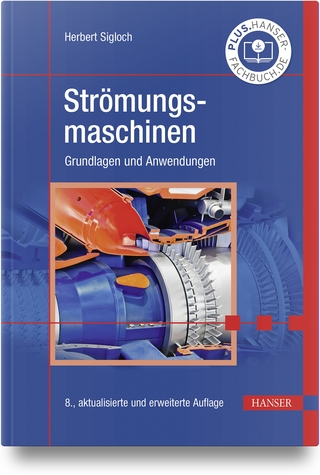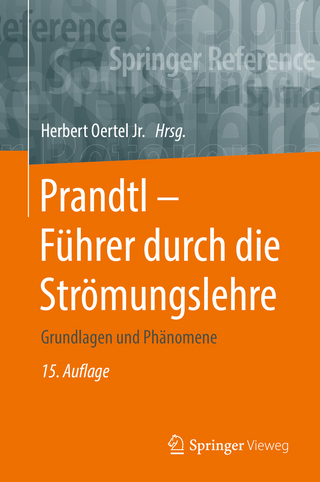
Fluid Mechanics in Channel, Pipe and Aerodynamic Design Geometries 1
ISTE Ltd and John Wiley & Sons Inc (Verlag)
978-1-78630-139-0 (ISBN)
Christina G. Georgantopoulou, Faculty Member in Fluid Mechanics, School of Engineering, Bahrain Polytechnic, Isa Town, Kingdom of Bahrain. George A. Georgantopoulos, Faculty Member in Fluid Mechanics, School of Engineering, Bahrain Polytechnic, Isa Town, Kingdom of Bahrain.
Preface ix
Introduction xi
Chapter 1 Fundamental Principles in Fluids 1
1.1 Introduction 1
1.2 Incompressible and compressible fluids 2
1.3 Fluid properties 2
1.3.1 Density (ρ) 3
1.3.2 Specific weight (γ) 6
1.3.3 Relative density 7
1.3.4 Pressure 11
1.3.5 Compressibility 12
1.3.6 Viscosity 13
1.3.7 Specific volume 20
1.4 Surface tension 20
1.5 Surface tension applications 21
1.6 Capillarity effect 23
1.7 Newtonian and non-Newtonian fluids 24
1.8 Vapor pressure 27
1.9 Cavitation 28
1.10 Formulae 30
1.11 Questions 37
1.12 Problems with solutions 38
1.13 Problems to be solved 47
Chapter 2 Hydrostatics 51
2.1 Introduction 51
2.2 Basic law of hydrostatic pressure 52
2.3 Law of communicating vessels 56
2.4 Forces applied by fluids on flat surfaces 58
2.4.1 Forces applied on the horizontal bottom of a vessel 58
2.4.2 Forces applied on the flat side walls of a vessel 60
2.5 Forces applied by fluids on curved surfaces 62
2.6 Archimedes’ principle 64
2.7 Consequences of Archimedes’ principle 66
2.7.1 Fully immersed body 66
2.7.2 Partially immersed (floating) body 69
2.8 Formulae 70
2.9 Questions 72
2.10 Problems with solutions 72
2.11 Problems to be solved 82
Chapter 3 Aerostatics 85
3.1 Introduction 85
3.2 General characteristics of gases 86
3.3 Pressure applied by air 86
3.3.1 Pressure caused by the motion of gas molecules 87
3.3.2 Pressure caused by the weight of gases 87
3.4 Buoyancy: Archimedes’ principle 88
3.4.1 Apparent weight of a body 90
3.5 Hot air balloons 90
3.6 Lifting force of a hot air balloon 92
3.7 Basic aerostatic law 93
3.8 Gas pressure variations: the Boyle–Mariotte law 94
3.8.1 The Boyle–Mariotte law 95
3.9 Changes in gas density 96
3.10 The atmosphere 97
3.10.1 International Standard Atmosphere (ISA) 98
3.11 Formulae 103
3.12 Questions 105
3.13 Problems with solutions 105
3.14 Problems to be solved 114
Chapter 4 Fluid Flow 117
4.1 Introduction 117
4.2 Flow field 117
4.3 Fluid velocity 118
4.4 Fluid’s acceleration 119
4.4.1 Steady and unsteady flows 121
4.4.2 Compressible and incompressible flows 121
4.4.3 Subsonic and supersonic flows 121
4.5 Streamlines 122
4.6 Mass conservation (continuity equation) 123
4.7 Continuity equation for flow in pipes 126
4.8 Energy conservation for incompressible flows(Bernoulli equation) 127
4.9 Applications of the Bernoulli law 131
4.9.1 Venturi tube 131
4.9.2 Ρitot tube 132
4.10 Euler equations 134
4.11 Navier–Stokes equations 136
4.12 Formulae 138
4.13 Questions 141
4.14 Problems with solutions 142
4.15 Problems to be solved 164
Chapter 5 Flow in Pipes 169
5.1 Introduction 169
5.2 Physical quantities 170
5.3 Laminar and turbulent flows in pipes 170
5.3.1 Reynolds number in pipes 170
5.3.2 Average velocity and velocity distribution 171
5.3.3 Shear stress in a horizontal cylindrical pipe 172
5.3.4 Pressure drop in a horizontal cylindrical pipe 174
5.3.5 Pressure drop in a horizontal non-cylindrical pipe 174
5.3.6 Shear stress τ0 and friction coefficient f 175
5.3.7 Pressure drop and friction coefficient relationship for a horizontal pipe 175
5.4 Basic equations 176
5.4.1 Continuity equation 176
5.4.2 Energy equation (Bernoulli equation) 177
5.5 Friction coefficient of a laminar flow of real fluid in a horizontal cylindrical pipe 179
5.5.1 Inlet conditions 183
5.6 Turbulent flow in pipes 185
5.6.1 Turbulent flow in smooth pipes 186
5.6.2 Turbulent flow in pipes with roughness 187
5.6.3 The Moody diagram 189
5.6.4 Calculation of relative roughness 190
5.6.5 Empirical expressions for the friction coefficient 191
5.6.6 Minor local losses 193
5.6.7 K values 195
5.6.8 Valves and other devices 195
5.6.9 Total losses 198
5.6.10 Solution of flow problems in pipes 199
5.7 Categories of pipes’ flow problems 201
5.7.1 A’ category flow problems 201
5.7.2 B’ category flow problems 202
5.7.3 C’ category flow problems 203
5.8 Pipes’ flow problems: numerical work examples 205
5.8.1 Α’ category 205
5.8.2 Β’ category 206
5.8.3 C’ category 210
5.9 Energy and hydraulic grade lines 214
5.10 Incompressible, viscid flow in connected pipes 219
5.10.1 Simple pipelines 221
5.10.2 Pipes connected in a row 222
5.10.3 Parallel connection of pipes 224
5.10.4 Mixed pipe connection 226
5.10.5 Pipe branches 228
5.11 Simple applications of pipeline networks 233
5.11.1 Simple pipeline 233
5.11.2 Pipes in a row 236
5.11.3 Pipes in parallel 245
5.11.4 Mixed pipe network 252
5.11.5 Problem of the three tanks 256
5.12 Formulae 267
5.13 Questions 283
5.14 Problems with solutions 286
5.15 Problems to be solved 350
Appendices 359
Appendix 1 Symbols and Units 361
Appendix 2 Tables and Diagrams of Natural Values 367
Appendix 3 Symbols and Basic Conversion Factors 385
Bibliography 387
Index 389
| Erscheinungsdatum | 03.05.2018 |
|---|---|
| Verlagsort | London |
| Sprache | englisch |
| Maße | 165 x 241 mm |
| Gewicht | 726 g |
| Themenwelt | Naturwissenschaften ► Physik / Astronomie ► Strömungsmechanik |
| ISBN-10 | 1-78630-139-3 / 1786301393 |
| ISBN-13 | 978-1-78630-139-0 / 9781786301390 |
| Zustand | Neuware |
| Haben Sie eine Frage zum Produkt? |
aus dem Bereich


